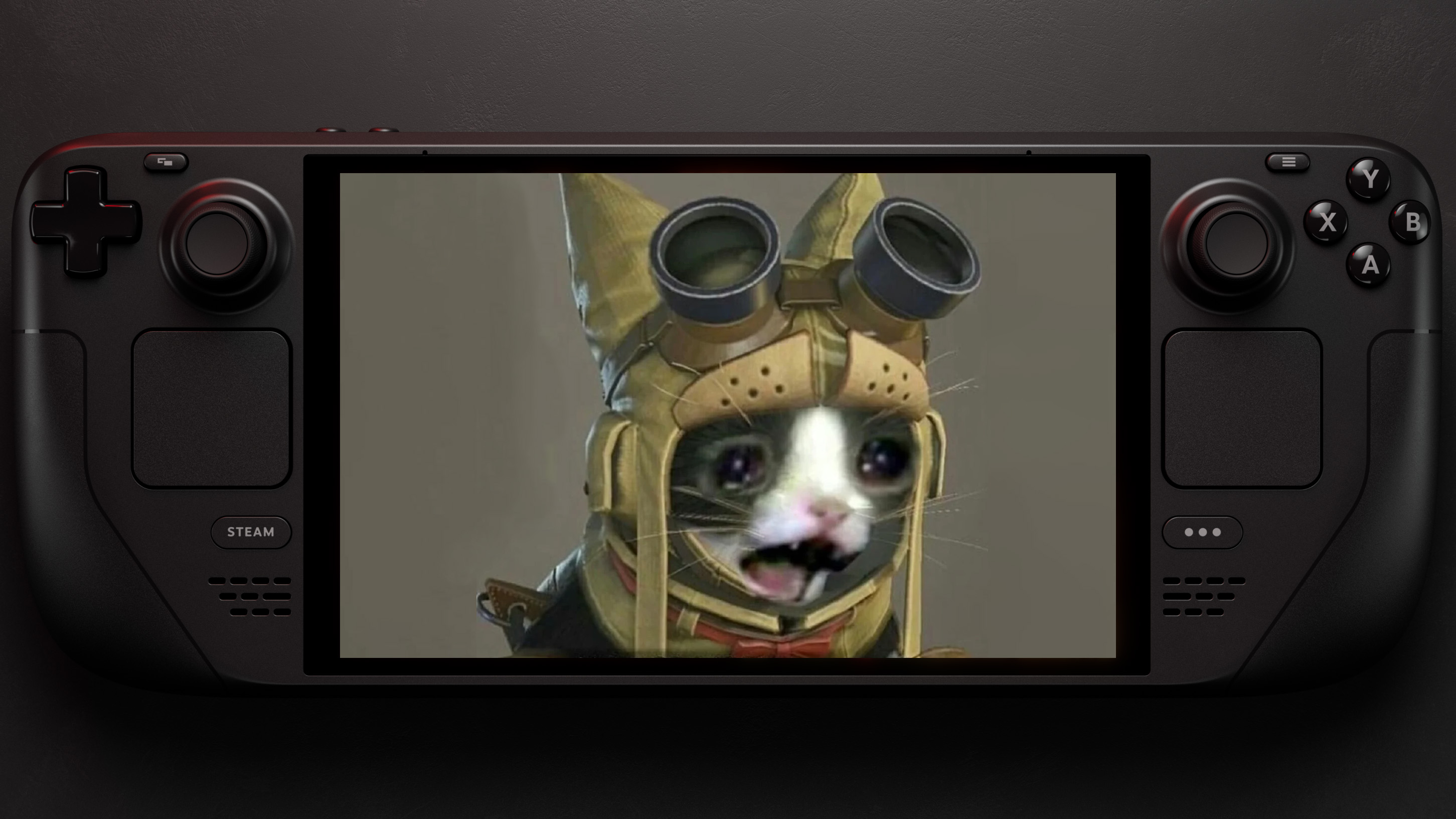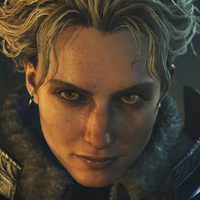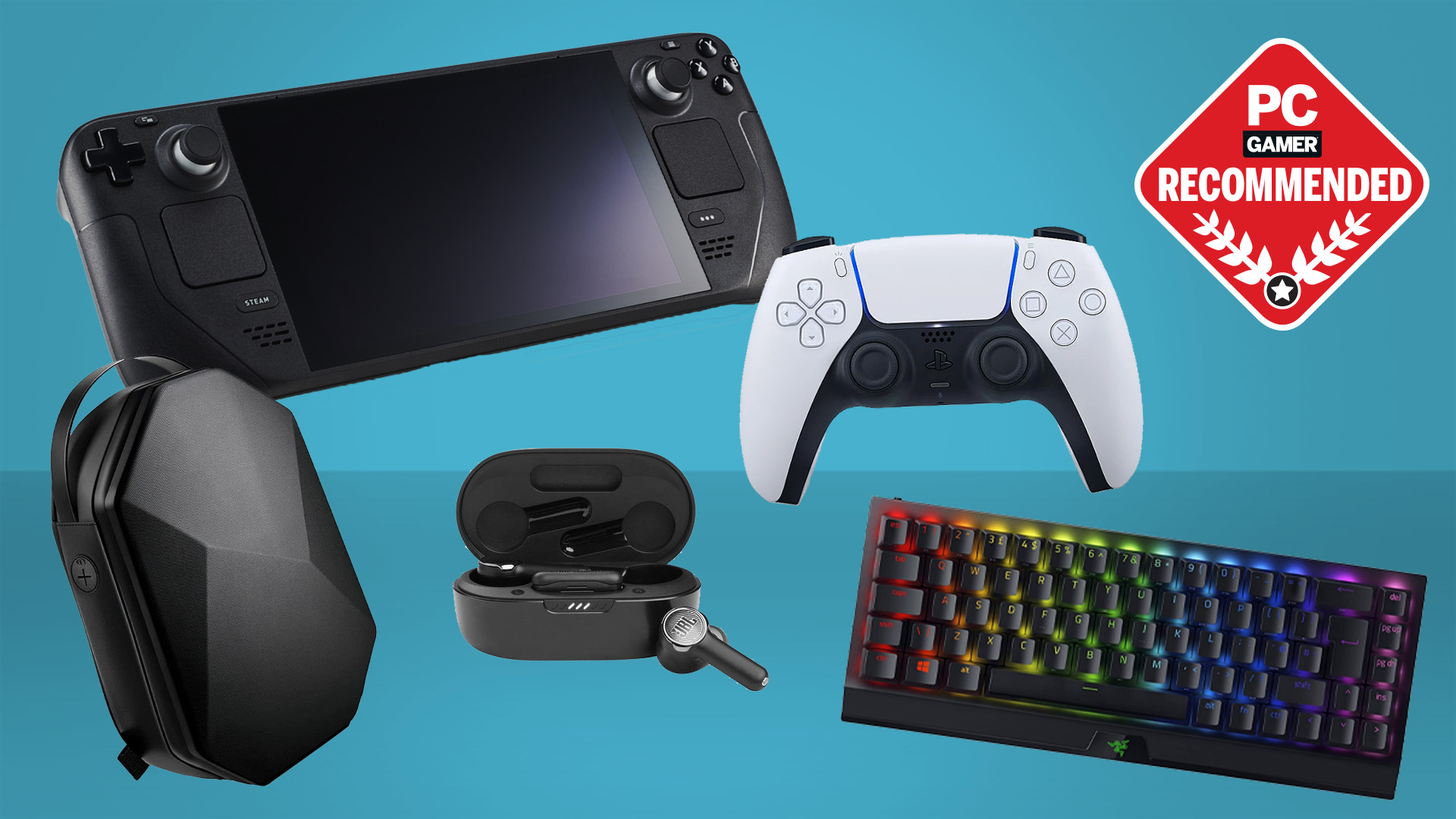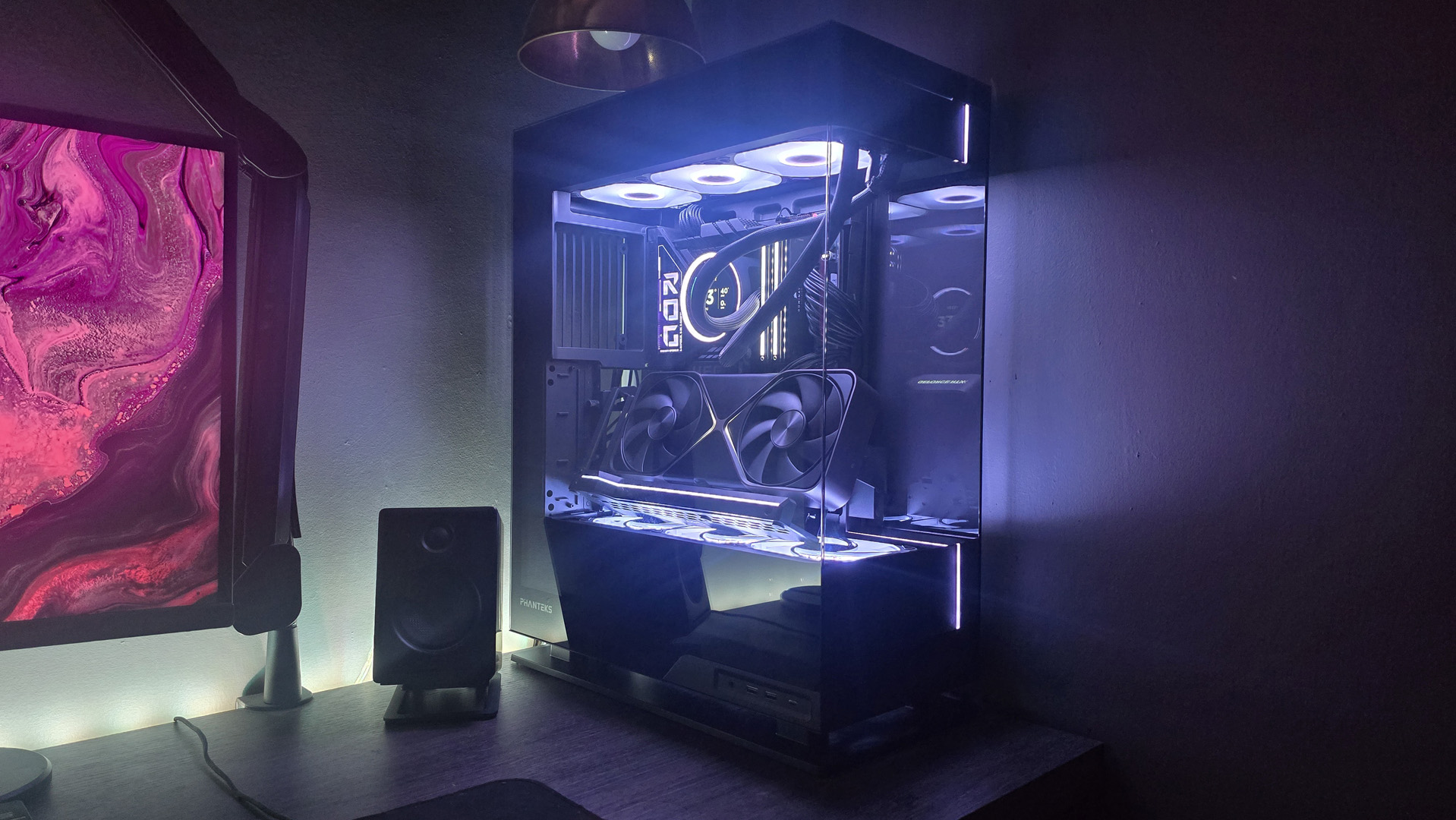Bad news for portable Monster Hunter Wilds hopefuls: the Steam Deck can't manage 30 fps, even in maximum potato mode
The Steam Deck just can't handle this monster.

You might've seen it coming from our testing with Monster Hunter Wilds' benchmark, but the modest hardware of Valve's Steam Deck isn't up to the task of running the game at anything close to playable framerates. In fact, it barely runs at all, though it is possible to at least boot up Wilds and tinker with its settings, which I did in the vain hope of seeing the framerate counter reach the 30 fps mark. Alas, it was not to be.
I installed all 60 GB of Wilds on my Steam Deck and loaded up my cloud save, which spawned me in the starting zone's bustling base camp. It's full of NPCs puttering around, and even without the complex processing requirements of a big monster battle the Steam Deck was struggling. Wilds wisely (perhaps desperately) kicked its settings down to the "Lowest" preset as soon as I loaded it up on the Steam Deck, which includes:
- AMD FSR upscaling (version 3.1.3) set to ultra performance
- Every graphic setting set to "low" or "lowest"...
- …or disabled altogether, like grass/tree sway, contact shadows, ambient occlusion, and water effects
Those compromises weren't enough to get me anywhere close to 30 fps in the base camp, though; the framerate was chugging along in the mid-teens, choppy enough to make me feel queasy if I had to look at it for long. I tried running out of the camp and the game crashed on me—twice—as it tried to do its normally seamless transition into the hunting area beyond.
Clearly the Steam Deck was going to need even more help, so I plugged it into power and then launched the game again, poking around in the settings and found a couple more things I could dial down: I switched bloom from "low" to off, and sky/cloud quality from "low" to "lowest." But those two minor graphical tweaks clearly weren't going to make enough of a difference.
To give the Steam Deck its best possible fighting chance, I opened the system settings and toggled on the 30 fps frame limit (not that we were exactly at risk of exceeding that cap), enabled Half-Rate Shading to further lighten the load on the GPU, and ticked on the manual GPU clock, pegging it to max 1600 MHz. Short of doing some hacky CPU overclocking, this was as good as it was going to get.
All those adjustments combined did help! Monster Hunter Wilds can, technically, run on the Steam Deck. It's just an absolutely abysmal experience. Standing in a relatively low-intensity part of the plains environment with no monster around and the screen a smear of hideous pixels, it manages an average of about 25 fps. Spin the camera and I'm down to 21 fps or so—and that's still without a monster on screen, or any of the game's dramatic weather and lighting effects popping off.
I did—once—see the framerate actually hit 30 fps. But for the most part it's bouncing around in the 20s, and at a resolution that turns most of the game's finely detailed art into amorphous blobs of pixels. It also crashed two more times while I was trying to capture the short clip above of how the game performed. I used my phone, because asking the Steam Deck to record video while playing Wilds would've been cruel and unusual.
The biggest gaming news, reviews and hardware deals
Keep up to date with the most important stories and the best deals, as picked by the PC Gamer team.
I don't have a beefier gaming handheld like the Asus ROG Ally on hand, so I asked hardware writer Nick Evanson, who spends countless hours testing games for their performance, if he managed to get Wilds to run on a handheld with more oomph than a Steam Deck. He managed to get a consistent 30 fps on a standard ROG Ally, in its 25 W mode, using a combination of low and medium settings, along with FSR 3 Performance and frame generation. In his words, "playable but not exactly enjoyable." (Nick will have a suite of settings recommendations for more capable PC hardware live on PC Gamer before Wilds launches later this week).
The new generation of AMD Strix Halo-powered devices may be able to run Wilds without variable rate shading and other rock bottom settings completely ruining the image quality. But given the challenges Monster Hunter Rise has running at a consistent 60 fps+ even on desktop hardware, I think there's really only one way that makes sense to play this one on a handheld at, and that's streaming it.
More Monster Hunter Wilds on PC Gamer

- Monster Hunter Wilds character codes
- Monster Hunter Wilds artian weapons
- Monster Hunter Wilds secret armor
- Monster Hunter Wilds layered armor
- Monster Hunter Wilds roadmap

- Monster Hunter Wilds: Sandstar
- Monster Hunter Wilds Gillopod
- Monster Hunter Wilds: Gravid Bowfin
- Monster Hunter Wilds: Tracktail lizard
- Monster Hunter Wilds: Rime beetle
- Monster Hunter Wilds Dapperwing
- Monster Hunter Wilds Goldenfish
- Monster Hunter Wilds: Grand Escunite
- Monster Hunter Wilds: Fucium ore
- Monster Hunter Wilds: Gracium

Wes has been covering games and hardware for more than 10 years, first at tech sites like The Wirecutter and Tested before joining the PC Gamer team in 2014. Wes plays a little bit of everything, but he'll always jump at the chance to cover emulation and Japanese games.
When he's not obsessively optimizing and re-optimizing a tangle of conveyor belts in Satisfactory (it's really becoming a problem), he's probably playing a 20-year-old Final Fantasy or some opaque ASCII roguelike. With a focus on writing and editing features, he seeks out personal stories and in-depth histories from the corners of PC gaming and its niche communities. 50% pizza by volume (deep dish, to be specific).
- Nick EvansonHardware Writer
You must confirm your public display name before commenting
Please logout and then login again, you will then be prompted to enter your display name.


